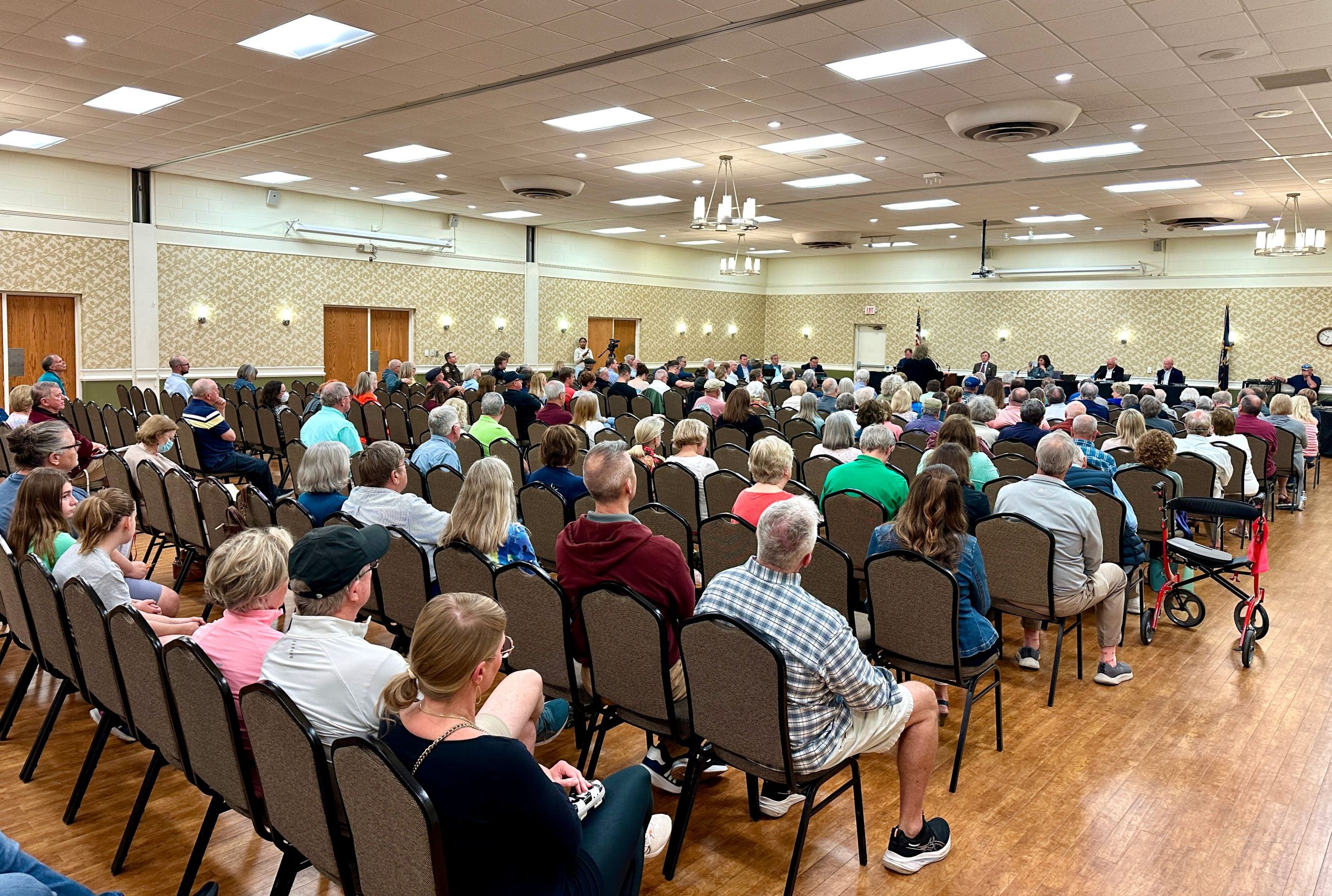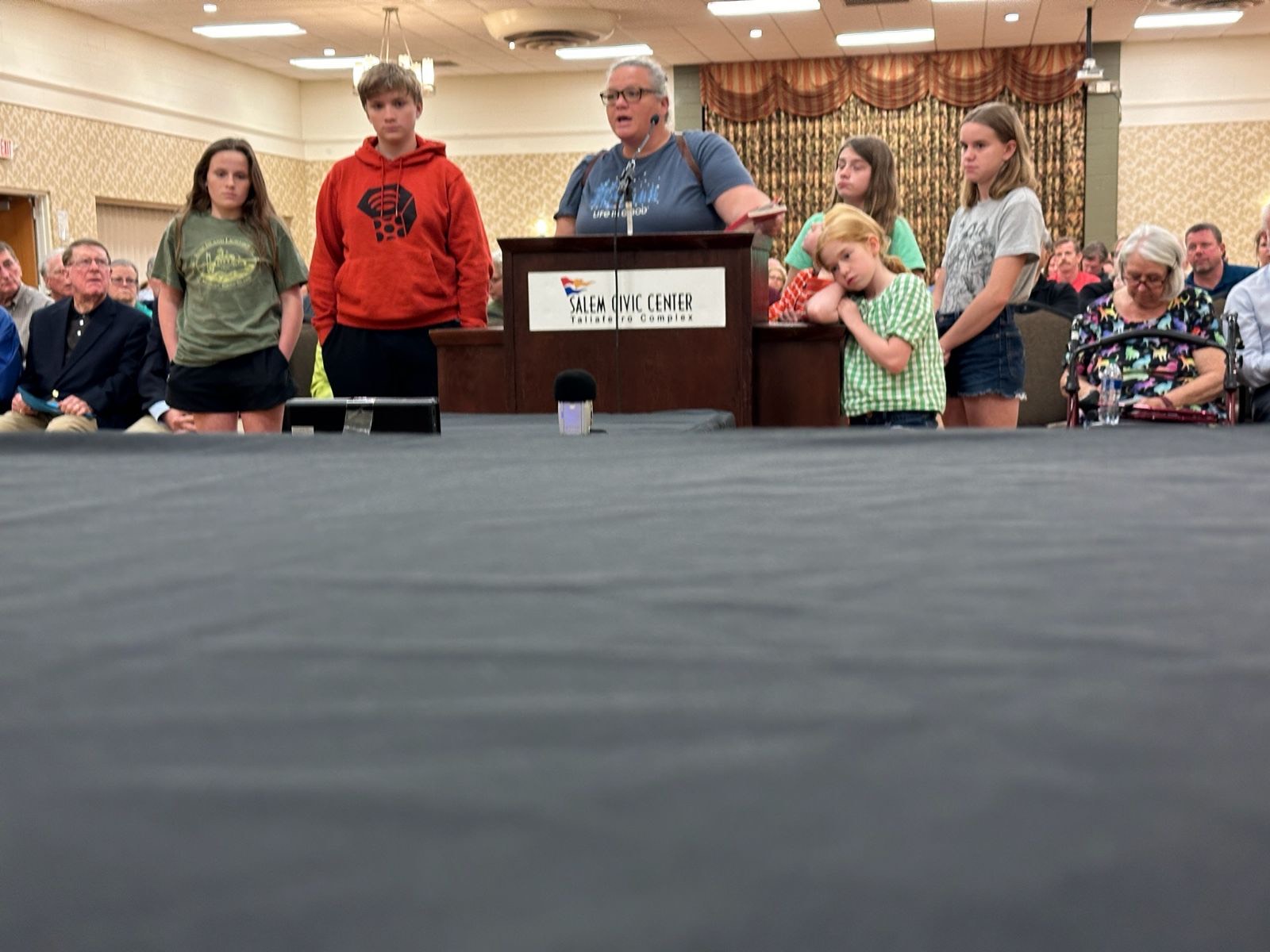

By Meg Hibbert
Contributing Writer
Five people out of 30 speakers were in favor of Planned Unit Development rezoning for the historic HopeTree Family Services campus, founded as the Virginia Baptist Children’s Home more than 100 years ago.
They spoke at Salem City Council’s public hearing Monday night in the Salem Civic Center’s Community Room. No vote is expected before June 10, Mayor Renee Turk said.
One of the supporters was resident Jennifer Thomas, who lives on Red Lane across from HopeTree, said likes the idea of one existing building for a coffee shop, “Which I would walk to every day.”
Thomas also said she looks forward to being able to walk on green areas and paths of what currently is private property.
Red Lane resident Mike Kummer, explained he is excited about the proposed PUD. “I would patronize a small store similar to what the Dilly Dally (in South Salem) is, with food and other items.”
He said the PUD “would give Salem a new source of pride.”
Twenty-three-year-old Ashby Garst said “There is more support for this proposal than is what in this room.” She wants to see more affordable housing for young people, she said, and added, “A walkable community would benefit us all.”
Former City Councilmember Jane Johnson, a small business owner, said she welcomes “this more creative approach.” She said beneficial rezoning “would allow more people our age to stay in Salem” in patio homes and similar housing.
“We want to attract younger people to Salem. A small hotel in an existing HopeTree building would be beneficial, and said she is “In favor off adding tax revenue possibilities.”
“All of Salem will benefit,” Johnson concluded.
Earl Petrie, a Karen Hills resident, was in favor because he said his daughter and family are looking for a house. “What HopeTree plans represent is a new beginning,” he said. “In years ahead there could be new people coming in – new businesses and new people.
Among points by 25 people who spoke to oppose HopeTree PUD plans were:
- An influx in traffic – perhaps 4,000 additional vehicles daily – in the historic North Broad Street neighborhood, and on Academy, Carrollton and Red Lane streets;
- Stormwater runoff from construction and paving on hilly HopeTree land;
- Additional students in Salem schools;
- Danger to walkers because there are no sidewalks on existing streets in that area.
Rose Hart grew up at the entrance of HopeTree, she said. “This would rezone one of Salem’s last greenspaces. This space will not be utilized the way it is promised,” she said.
“It is a poorly thought-out plan, spitting in the faces of established neighborhoods,” Hart said. “You are considering selling property owners out.”
Hart’s remarks were met with a large round of applause.
Madeline Grachowski of Ingall Court brought five of her young children and foster children to the podium with her. “You should be looking at quality over quantity,” she said, emphasizing lack of safety for children and adults walking and playing in the area, and the impact on schools.
Nancy Reynolds, who represented Emerald Hill homeowners, said those homes share a property line with HopeTree and could see reduced value of their property. “A PUD is a blank check,” she concluded.
Builder Mike Lane said the hilly topography would have uphill streets, “and ski slope backyards.”
The HopeTree PUD proposal has been under study and revision for 100 days. Under current zoning, HopeTree property could be developed into 200 houses.
The proposal that could allow up to 340 residential units, plus a small hotel, corner store and other commercial areas.
At earlier meetings, Stateson Homes representatives said the proposal would repurpose at least three existing buildings on the campus for a corner grocery and coffee shop and small restaurant.
At the April Planning Commission meeting where commissioners voted 3-2 to send the proposal to Council, Stateson Homes President Todd Robertson said “It would be more pedestrian friendly” than traditional development.
HopeTree plans to sell half of its 37 acres to Stateson Homes to develop more-than 300 homes, condos and apartments.









This rezoning is exceptional and unreasonably dense. Typical single family zoning allows about. 4 units per acre. This proposal more than doubles this to over 8 units per acre. The entire are around this land is low density single family. The proposal would plunk commercial, including restaurants and a hotel in the middle of the area. The streets are narrow into the proposed area, typical trucks serving the restaurants and commercial retail are simply too large and too dangerous. If developed under current zoning, only about 150 residential units could be built, not the proposed 340. The proposal is contrary to the city’s current Comprehensive Plan.